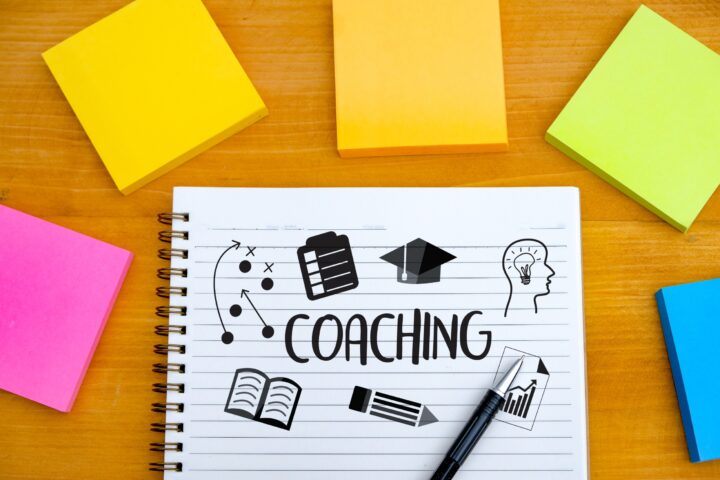
I love planning, leading, and facilitating business workshops. I even got myself certified as a facilitator when I worked in the corporate world.
Back then, I helped other teams run their strategic planning workshops. For my own team, I always hosted a face-to-face (FTF) planning workshop that brought the whole team together. If the budget allowed, I’d do it every 6 months. If not, I’d do it once a year, which was either 2-3 months before the new fiscal year started or 1-2 months after the new year. The frequency and the timing of planning workshops usually depended on management support, budget, and the announcement of the upcoming year’s business imperatives.
With team members scattered around the world or remote working options, a well-planned FTF workshop is such a great way to:
- Build synergy as a team
- Align the overall business, as well as sales objectives and marketing strategies
- Discuss and resolve any issues that are difficult to communicate over distance (the perfect example is technology stacks and technical issues or workflows)
- Allow team members to get to know each other personally
- Do something FUN as a team
The intrinsic value is hard to articulate. No dollar value can be associated with an in-person planning workshop.
You can’t tie a workshop to your lead gen or pipeline opportunity goals. Yet, the hidden value is vast.
Team members feel energized, understand the upcoming goals and objectives, and are ready to tackle challenges collectively. It affects morale, productivity, and the company’s performance.
Plan for your planning workshop
To unite your team under a common purpose and allow time for the team to address their working issues and have a great time, you need to PLAN the planning workshop. Workshop preparation will make or break workshop outcomes.
Here are some DIY tips to help you plan your workshop:
Step 1: Identify Your Organization’s Objectives and Challenges
Before you can start your workshop, make sure that your organization already has identified business imperatives, goals, and objectives. Internalize them and map out which goals and objectives your team will support. As a B2B marketing leader, you need to do your homework first. By doing so, you’ll also pinpoint organizational challenges you have that stand in the way of achieving annual business goals and objectives.
Occasionally, I have hosted “working” planning sessions where I didn’t have top-down directions. We, as a team, determined the business goals and objectives and shared them with management. With this approach, you may need to do a second planning meeting to brief the team and rework your recommendations.
I’d recommend that you only do the planning workshop when the organization is pretty set on the upcoming year’s goals and objectives.
Tip: Don’t worry about the constant changes in goals and objectives. Every company changes its goals and objectives often. Stick to one set of goals, and modify your plan if they make changes.
Step 2: Craft Workshop Agenda and Activities
The other key element is agenda setting. I’d recommend that you craft your agenda in 30-minute or 60-minute increments.
You can also add learning sessions for staff career or skill development. Working or brainstorming sessions are also nice to have, as they allow team members to interact and solve organization-specific problems or challenges.
Everyone loves team dinners and team-building activities. They provide a relaxing atmosphere for everyone to connect.
Get feedback from the local team members or have your administrative assistant search for options for dinner options and team activities. You can make a decision as you see fit. The tricky part is to find something everyone would enjoy.
Tip: The agenda tends to be fluid for months, it’s not usually finalized until 2-4 weeks prior to the workshop. Be OK with that.
Step 3: The Roles of Lead (workshop owner) and Facilitator
When you have a team get-together, someone needs to take charge. That’s usually the workshop owner, who may or may not be the executive or manager of the organization (they may delegate that role to someone within the team).
The workshop owner acts as an emcee to kick off every agenda item, but it’s important to have a workshop facilitator as well, especially if you have several working and brainstorming sessions.
A good facilitator can resolve impasses and help keep conversations and discussions on topic. Having two people tag team helps for a smooth workshop flow.
Tip: You can hire external workshop facilitators or ask team members to volunteer, but please make sure that they have the skill set to facilitate group discussions and encourage conversations from team members who don’t talk.
Step 4: Review Presentations and Workshop Delivery
Getting presentations from presenters is like herding cats. Occasionally, a dry-run or rehearsal is necessary, especially keynotes or presentations akin to a theatrical performance. Most of the time, presentations are done by internal team members or executives.
The content matters more than the presentation style. After all, this is an internal meeting. The key is to either make sure everyone is informed or to get enough instructions to be ready for working or brainstorming sessions.
Tip: As a workshop owner, I’d recommend you review each presentation to ensure messaging aligns with your workshop objectives and agenda items. Sometimes, you might get presentations that are not well-prepared, and as a result, you’ll need to provide guidance to make the slides better.
Step 5: Post-Workshop Activities
When the workshop is finished, it’s important to run a quick survey from the team to get their feedback on how to make it better the next time. You can do that at the wrap-up or post-workshop.
Any action items from the workshop need to be associated with owners. The best way to keep the momentum going is to follow up and ask owners to provide regular updates.
At your team’s quarterly meetings, you can work with the executives to provide updates on pending action items that need follow-through.
Tip: Documenting outcomes, creating a follow-up plan, and setting accountability structures ensure that the brilliant ideas and tasks born within the workshop walls are brought to fruition.
Conclusion
Each step in your strategic planning workshop, from identifying challenges to following up post-event, is a cog in the wheel of project management. Workshops, if done right, can make you a better leader and help turn your staff into a high-performance team.
By hosting a strategic planning or marketing planning workshop, your marketing team doesn’t just plan for the future; they actively shape it.
Feel free to reach out to me if you need help with planning, leading, or facilitating your business planning workshops.
I am here to help!



